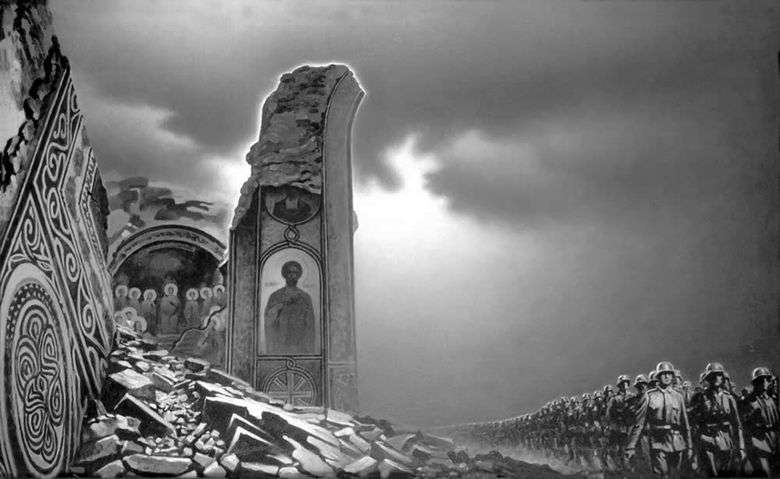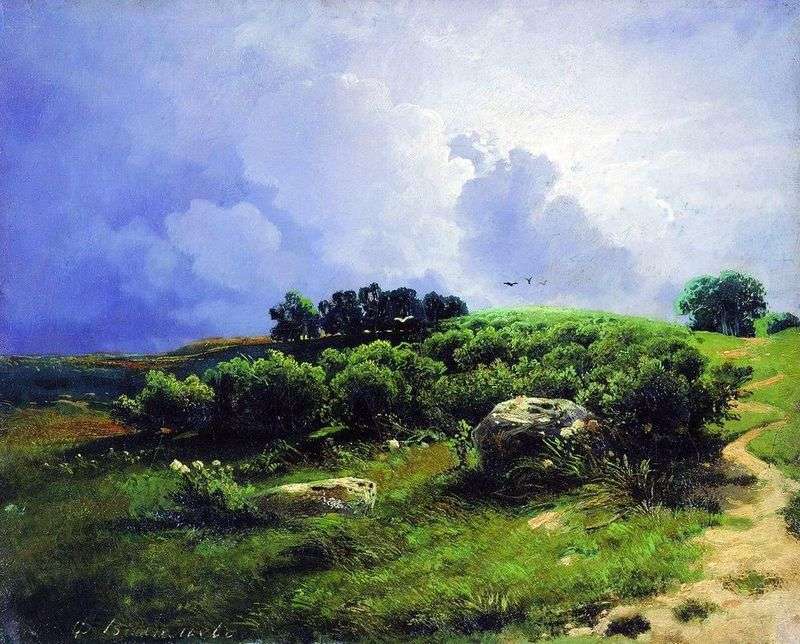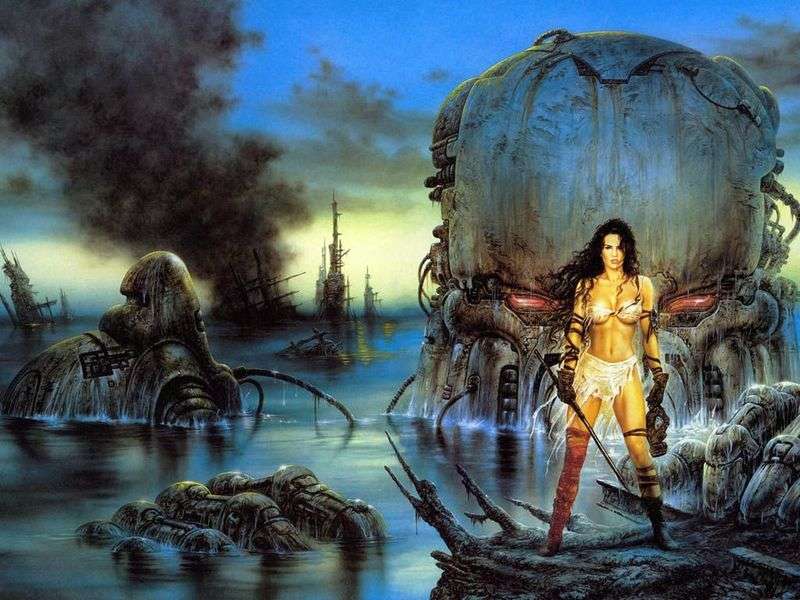
When searching for information about K. Vasiliev’s film “Invasion”, you will certainly find something about the fact that in the Tver region the same rock festival is held. Domestic rock musicians gather in the open air, among them A. Vasiliev and the “Spleen” band. If you have enough meticulousness and at least understand something in the genealogy, you will find an amazing fact: a musician and an artist are distant relatives.
And, if enough is known about the former, then the information about the latter can be quite scanty. So, K. Vasiliev wrote on a special, heroic theme. The Great Patriotic War, the past of Kievan Rus, the heroic cycle – all this was reflected in his special worldview. Pictures “Parade 41”, “Yearning for the Motherland”, “Farewell to the Slavs” have an almost tangible sound. If you look closely at the work “Invasion”, then you will see how skillfully the artist portrayed the fear of loss and hope for the best, human faith and disbelief.
The main motifs of the painting “Invasion” are a feeling of fear, grief and death. It seems that there are no barriers to conquerors. However, in the interpretation of the author this is not silence, but calm. The saints’ sights with ancient frescoes seem to warn that the conquerors, though subdued half the world, will not be able to capture holy Russia.
The idea of the picture was borne by the artist long enough. Vasiliev several times rewrote the canvas and from the original multi-figured composition with the battle of the Teutonic Order depicted on it with the Slavs there was only an ideological sense. The battle scenes were abolished, only the struggle of the spiritual and ideological-symbolic conflict remained.
The key word for this work of Vasiliev is the very word “invasion”. Typically, this definition is used to indicate the invasion of enemies in the country, with a huge number of enemies. This is the lexical meaning of the word, which carries in itself the deepest subtext. The picture could be simply called “War”, but you can fight for something that is expensive, because it’s sacred. The very semantics of the word “war” carries sorrow, cruelty and death. However, people can fight, defending their beliefs and the desire for a better life. The word “invasion” in no way reflects the upholding of convictions, it simply becomes synonymous with gross meaningless power. Under the invasion is most often meant uncontrollability, unconsciousness and spontaneity. In addition, the invasion symbolizes something that is difficult to stop.
In order to better understand the ideological meaning of the picture, it is worth remembering the use of this word in Russian: the invasion of the Tatar-Mongol horde, the invasion of Napoleon, the invasion of enemies and even the invasion of locusts. Try to say these words aloud, and you will understand what they said about the strong, terrible and inevitable event.
Considering the coloristic features of “Invasion” it is impossible not to notice that the main color in the picture is gray. This shade stains the earth, a fire, clouds and even images of saints. As a rule, gray is a sad, sad and sad symbol of human life. Psychological features of gray are to create a state of despondency, sadness and sadness. Only this shade can create a depressing mood and a sense of heaviness. Gray is monotone, tragic and inexpressible sadness.
Stormy gray tone of the picture can not help but a depressive state. Yes, and he has, where to appear: the ruins against the background of the leaden-gray sky, faces of saints with inhuman sorrow in the eyes. The entire canvas is covered in a single auditory image – silence, and heavy and sinister. The only thing that is heard in silence is the march of the enemy troops along the road.
Vasilyev seems to be pushing us to split the world into two parts. On the right side, he depicts an army of invaders, more precisely, hordes. They seem endless and overwhelming a part of this world. To the left we see the devastation that affected one of the main human shrines – the temple. Look at the sky: it is gray with shades of blue and dirty violet divorces. Where there is a clearing between the clouds, pale, even deathly-pale glare peeps out.
On the canvas, we have only two symbols. The pillar of faith and hope of Rus remains the ruined Assumption Cathedral of the Kiev-Pechersk Lavra with the remains of the faces of the saints. They severely closed their lips and prayed to God, hoping that he would save lives for people. The second symbol is destruction, which reflects the iron horde of the invaders.
The destroyed temple in the “Invasion” – in itself is terrible. Vasiliev writes a scorned shrine, which once gave people moral support, consolation and hope for a better life. Temples, as you know, have always been in the minds of the Russian people an important part of his cultural heritage, since they were erected in honor of an important event and were significant for history. Now only dumb witnesses remained from him – the figures of saints, symbolizing not only the universal sorrow, but also the spiritual strength of people. Christian martyrs against the background of the invasion are not just faces, they are judges who give each according to his deeds.
Vasilyev’s painting creates a mood, but does not answer many questions from the viewer. For example, she will not say why the hordes of conquerors moved to Russia, but will exacerbate the sense of justice. The spectator involuntarily begins to believe in her triumph, in the fact that the people can stand up even at a terrible time for him. Many, in spite of the atmosphere of fear created by the artist, do not experience it, but, on the contrary, they know that soon everything will end. There is, of course, pain for their loved ones, for destruction and death, but the faces of Christian saints are capable of giving hope: if they survive, people will stand.
The painting “Invasion” is very important for the education of not only patriotic feelings, but also for the strengthening of faith. As a rule, it inspires much, but a person who believes can not be defeated.
Another aspect of “Invasion” is a warning. Vasiliev’s canvas shows that the invaders invaded Rus and can do it again. The artist calls us to think about the future, especially in the conditions of modern, far from peaceful time.
 Invasion – Konstantin Vasilyev
Invasion – Konstantin Vasilyev Invasion – Konstantin Vasiliev
Invasion – Konstantin Vasiliev Fight Dobryni with the Serpent by Konstantin Vasilyev
Fight Dobryni with the Serpent by Konstantin Vasilyev The Volga lagoon by Fedor Vasilyev
The Volga lagoon by Fedor Vasilyev Before the storm by Fedor Vasilyev
Before the storm by Fedor Vasilyev Abandoned mill by Fedor Vasilyev
Abandoned mill by Fedor Vasilyev In the Crimean Mountains by Fedor Vasilyev
In the Crimean Mountains by Fedor Vasilyev Invasion by Luis Royo
Invasion by Luis Royo